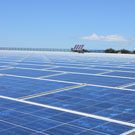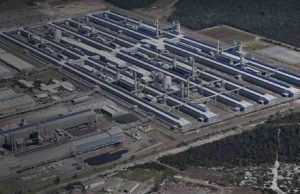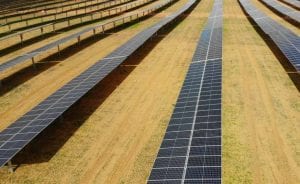Zhengrong Shi has delivered the most bullish forecast to date for the China solar PV market, predicting that 4 gigawatts – or even more – of solar PV could be deployed in the country in 2012.
Shi, the former UNSW researcher who now heads the biggest solar PV manufacturer in the world, Suntech Power, said more than 3GW of solar was deployed in China in 2011 (more than previous forecasts).
This suggests that even the most recently updated prediction of 15GW of solar by 2015 (the year-ago forecast was for 5GW by 2015) in the world’s biggest consumer of energy could be beaten quite handsomely.
The China market is emerging as the key for the global solar PV industry – and for Chinese manufacturers – as subsidies in Europe and elsewhere are gradually wound back.
Suntech and other leading manufacturers such as Trina Solar predict that around half of their sales will be in their domestic market, compared to virtually zero in 2010.
However, in an interview at the World Economic Forum on Bloomberg TV this week, Shi also said solar PV would reach parity in half of the world’s countries by 2015, and was already cheaper than alternatives in many energy-poor countries in south-east Asia, India, and Africa.
“Solar is getting so cheap,” Shi said in the Bloomberg TV interview. “We believe by 2015, there will be around 50 percent of countries that reach grid-parity.” (link to video)
Suntech says that solar is already reached unsubsidized parity in countries such as India, Italy, Spain and Hawaii – after a 51 per cent fall in the price of silicon based panels in 2011.
Indeed, late last year it made bullish predictions for the Australian market, noting it had already reached retail parity in some parts of the country, and suggesting accelerated growth could see solar supplying 5 per cent of the nation’s power demand by the end of this decade, or the equivalent of 10GW of installed capacity.
“Solar now is already cheaper than diesel generating electricity in India,” Shi said. “This is not only happening in India but in many countries around the world.”
Shi was asked by Bloomberg TV if had a million dollars (he’s actually got quite a lot of those) – would he invest in US Treasuries, gold, or Picassos for a safe investment. “Solar,” he said. “Solar is the future.”
Obama’s solar moment
Meanwhile, President Barrack Obama’s State of the Union Address is being dubbed the “all of the above” energy policy. It focused mostly on oil (opening up 75 per cent of reserves for drilling) and shale gas (could provide 600,000 jobs), and made a single mention of solar – and climate for that matter.
“The differences in this chamber may be too deep right now to pass a comprehensive plan to fight climate change,” Obama said. “But there’s no reason why Congress shouldn’t at least set a clean energy standard that creates a market for innovation. So far, you haven’t acted. Well tonight, I will.”
He said the Navy, which has an ambitious target of sourcing 25 per cent of its energy needs from renewables within a decade, will make the largest purchase of renewable energy purchase in history, enough to power a quarter of a million homes a year, and the Interior Department will lay the foundation to provide 3 million homes with renewable energy power from solar and wind projects on public lands by year’s end.
His sole mention of solar came in this sentence, which has relevance to Suntech’s predictions (and the war over cheap imports) “I will not walk away from the promise of clean energy. I will not cede the wind or solar or battery industry to China or Germany because we refuse to make the same commitment here.”
And on that point he said the Navy, which has an ambitious target of sourcing 25 per cent of its energy needs from renewables within a decade, will make the largest purchase of renewable energy purchase in history, enough to power a quarter of a million homes a year, and the Interior Department will lay the foundation to provide 3 million homes with renewable energy power from solar and wind projects on public lands by year’s end.
And he also urged Congress to pass clean energy credits, many of which are due to expire at the end of the year. On that note, the White House later released proposals for a temporary extension of the Advanced Energy Manufacturing Tax Credit, providing a $5 billion extension to leverage a further $20 billion in investment.
The Republican response was as predictable as it was lamentable. Grant permission for the Keystone oil sands pipeline, while right wing bloggers wondered if Navy Seals would now be cross trained in solar panel maintenance.
And why not? It’s the Navy brass that has been leading the push into renewables, knowing that most of the casualties on the battlefield come in supply chains for fuel and oil.








